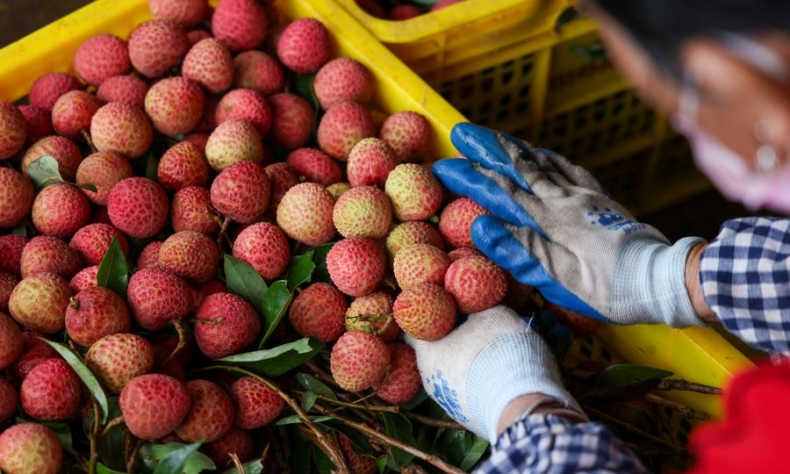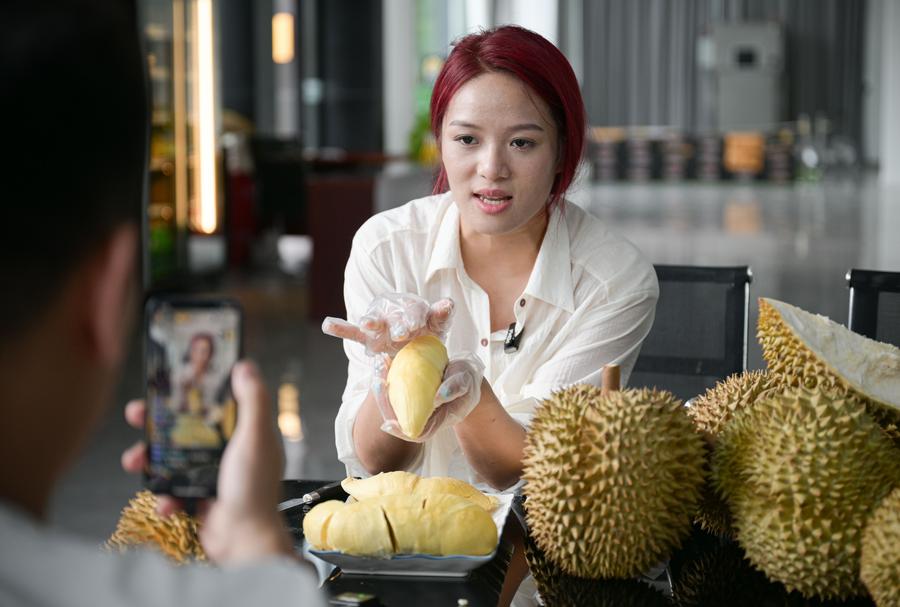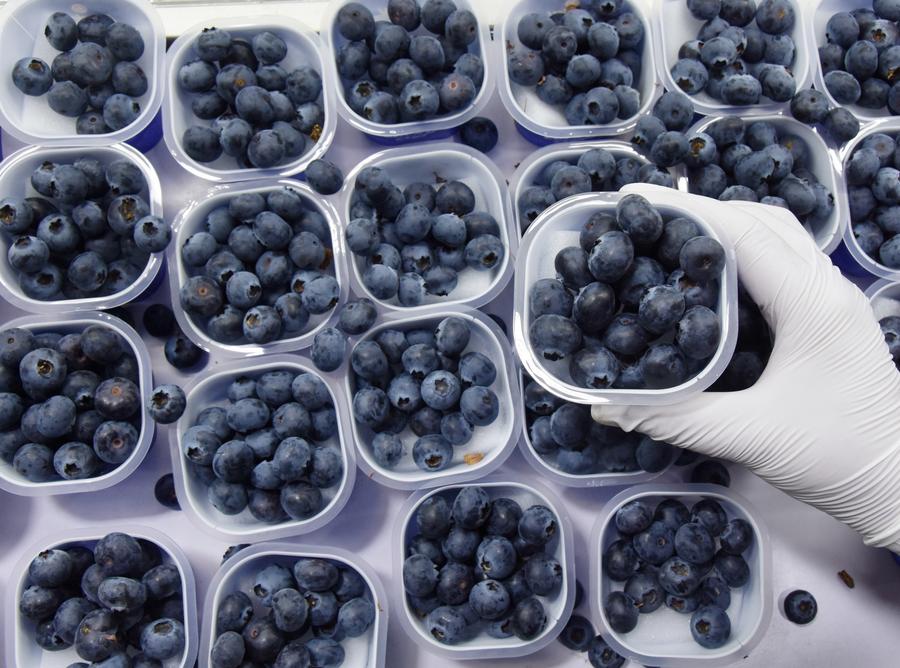Supply Chains and Tech Revolution Topple China’s “Luxury Fruit” Prices

The combined effect of high-quality domestic supply and efficient transportation systems is driving price drops for ‘luxury fruits’.
The timing is almost poetic. As lychees ripened in orchards this season, the online drama Lychee in Chang’an flickered onto screens—reawakening an ancient tale of obsession.
The series resurrects Tang Dynasty (618-907) couriers who thundered down imperial roads day and night, racing against time to deliver Guangdong’s precious tropical fruit to the emperor’s consort in Xi’an. For centuries, this story depicted in a famous Tang poem cemented lychees as China’s ultimate “noble fruit,” maintaining consistently high prices—until this year. A lychee wholesaler surnamed Tao in Chengdu, Sichuan Province of southwest China, with over a decade of experience, told newspaper Sichuan Daily that this season’s wholesale price for the Feizixiao, a lychee variety whose name was inspired by the story of the lychee-loving consort, is less than 13 yuan ($1.6) per kg, down from over 20 yuan ($2.8) in previous years—effectively halved.
At retail, prices can go below 20 yuan per kg. A Chengdu resident surnamed Shi told Sichuan Daily that, in the past, high prices limited her to occasional small purchases during lychee season, typically from May to July, but this year’s affordability lets her enjoy them as daily fruit. Even in Harbin—capital of Heilongjiang Province in China’s far northeast, 3,000 km north of lychee groves—Feizixiao sell for the same price.
Behind this lychee price plunge lies a record bumper harvest in major growing regions. The National Lychee and Longyan Industry Technology System projected China’s 2025 lychee output at 3.65 million tons, a 111.26-percent year-on-year surge, hitting a record high. Additionally, lower shipping costs contribute. While early lychees from the southernmost island province of Hainan relied on air freight, the bulk harvested later was shipped entirely via road transport. Direct cold-chain trucks from orchards slashed logistics costs by 50 percent. Industry insiders predict prices may remain low through August with mid- and late-season varieties flooding the market.
Harvest of the commons
Lychee isn’t alone in stepping down from its luxury fruit pedestal. The peak season for durian is currently in full swing.
Right now, if you search the hashtag “selling durian” on Douyin (the Chinese version of TikTok), you’ll find dozens of livestreaming sellers broadcasting from warehouses stacked floor-to-ceiling with durians. Hosts slice them open on camera, exposing the creamy golden flesh inside while shouting out limited-time deals to eager viewers.
Prices now commonly run under 60 yuan ($8) per kg. For durians weighing under 1.5 kg, expect to pay less than 90 yuan ($12)—including shipping costs. This isn’t a one-off sale—it’s a trend. Durian prices began their nosedive in 2023, and in this peak season, the affordable prices continue.
“A few years back, even a relatively tiny durian would set you back over 100 yuan ($14). Paying just 60 yuan ($8) for one was unthinkable—now we’ve truly achieved ‘durian freedom’!” a Beijing resident surnamed Liu told Beijing Evening News.
Similarly, former “noble fruits” like cherries and blueberries have now become more affordable for ordinary consumers.

Zhao Junye, chief analyst of fruit varieties at the Ministry of Agriculture and Rural Affairs, told China Central Television that the decline in durian prices results from multiple factors. “Supply has increased considerably,” Zhao said. Thailand is a major production region, and data from its Ministry of Agriculture and Cooperatives show the country’s durian output is projected to reach 1.68 million tons in 2025, a year-on-year increase of 30.72 percent.
Another major producer, Viet Nam, officially gained China’s phytosanitary access in 2023 and its fruits subsequently entered the Chinese market in large quantities, directly impacting prices. Its durians can reach Chinese fruit markets in as little as 10 hours due to efficient cross-border highway and railway transportation. In 2024, fresh durians from Malaysia were approved for the Chinese market, further intensifying competition.
Located on the China-Viet Nam border in Guangxi Zhuang Autonomous Region in southwest China, Pingxiang Station is China’s first railway port handling direct import/export fruit transportation. Official data show that the second quarter of 2024 saw cumulative fruit imports through Pingxiang Railway Port reach 12,500 tons, accounting for about 30 percent of total fruit imports during the same period. Durians made up over 50 percent of these imports.
Meanwhile, domestic durian production has begun entering the market, though still on a small scale. Zhao said that Chinese researchers began introducing durian cultivation as early as the 1950s. Initial planting trials were unsuccessful, leading to slow development after its introduction. “In 2018, after overcoming a series of planting technical challenges, large-scale cultivation using grafted seedlings began, mainly concentrated in Hainan,” Zhao said.
The island has seen a surge in commercial durian planting since 2019. According to the Hainan Durian Association, the current durian planting area in the province is approximately 2,700 hectares, with about one 10th bearing fruit in 2024. Output reached approximately 250 tons, indicating the initial formation of a durian industry. The domestic durian planting area is estimated to reach 6,700 hectares by 2026.
Domestic durians have advantages in transportation time and cost. Moreover, they are usually allowed to ripe on trees, which results in a higher sweetness than imported ones.
Price of abundance
Unlike durian which remains in small scale of localized cultivation, blueberries have achieved highly mature localized production in China. Since commercial-scale planting began in 2000, Yunnan Province has become a prime blueberry growing region due to its exceptional natural conditions, including temperature, sunlight, soil and water.

“Back then, China had no substantial blueberry industry. Market supplies mainly relied on imports, costing hundreds of yuan (tens of U.S. dollars) per kg,” Sun Bo, a blueberry grower in Yunnan, told Xinhua News Agency. “Imported blueberries spent 30-35 days at sea plus five to six days in customs clearance, so their freshness was already greatly compromised by the time consumers got them.”
This transformation stems from over two decades of collaborative research between scientific institutions and enterprises. He Jiawei, Director of the Institute of Alpine Economic and Botany at the Yunnan Academy of Agricultural Sciences, told newspaper People’s Daily that since 2009, dozens of institutions, including the Yunnan academy and Jilin Agricultural University, have developed proprietary varieties by breeding local cultivars based on imported superior species. “Some enterprises have also established digital-intelligent management systems that monitor growth conditions in real-time while using AI for yield prediction, with error rates controlled within 5 percent,” he said.
As of 2023, China’s blueberry industry spanned 27 provinces had achieved year-round fresh fruit supply, and exported to countries including Russia and Malaysia. Processed products like blueberry juice and dried blueberries had also been developed.
In 2020, China’s blueberry cultivation area and output both ranked first globally. By 2024, the planting area had exceeded 90,000 hectares nationwide, a 44-percent increase from 2020, while production had surged by 197 percent. Market prices had dropped from hundreds of yuan per kg to approximately 50 yuan ($7).
Shine Muscat grapes have similarly achieved large-scale domestic cultivation, with planting area now exceeding 167,000 hectares nationwide. Prices have dropped dramatically from hundreds of yuan per kg previously to just single-digit yuan (under one U.S. dollar) now.
“Profit-driven expansion continued for formerly premium-priced fruits,” Li Guoqiang, a researcher at the Chinese Academy of Social Sciences’ Rural Development Institute, told Jiangnan Evening News. “The price drops for ‘luxury fruits’ stem from the combined effect of high-quality domestic supply and efficient transportation systems.”
“At the policy level, we must strengthen cultivation guidance to prevent overcapacity while helping growers improve quality and reduce costs,” he added. “At the enterprise level, producers should enhance quality control, boost added value through deep processing and expand sales channels.”
 Facebook
Facebook
 Twitter
Twitter
 Linkedin
Linkedin
 Google +
Google +










